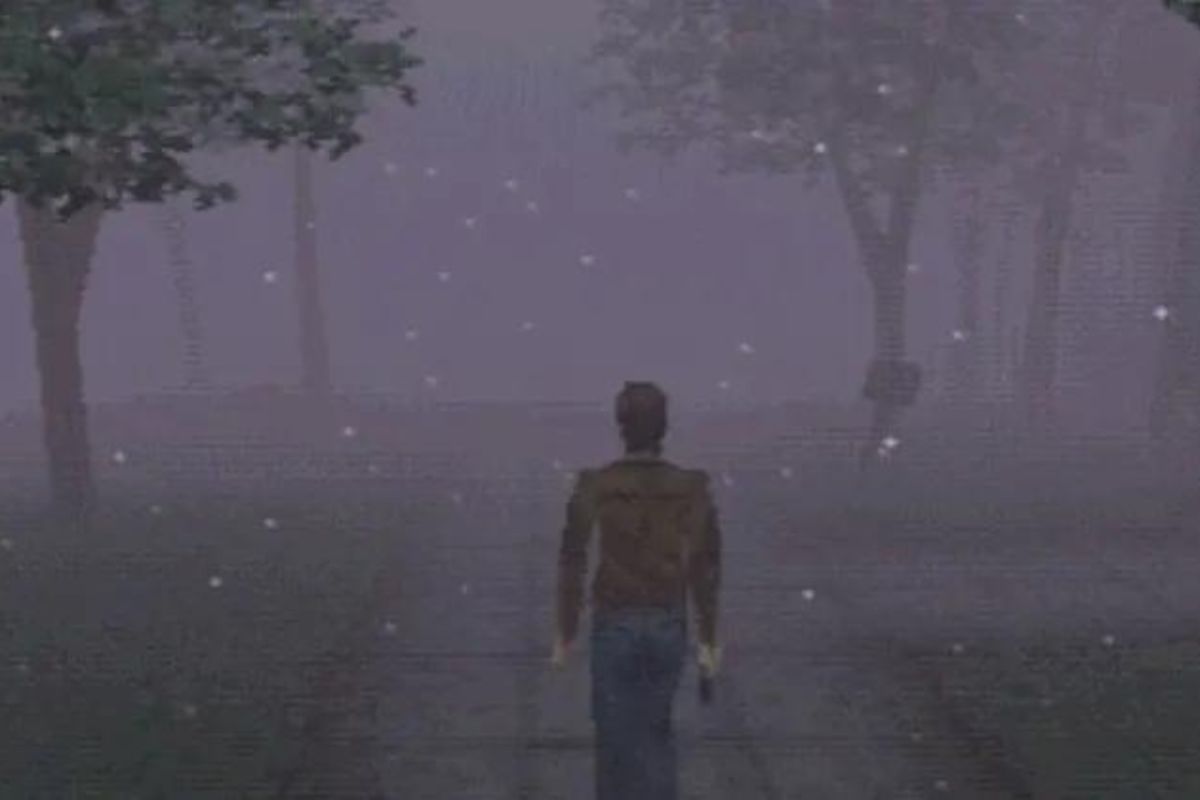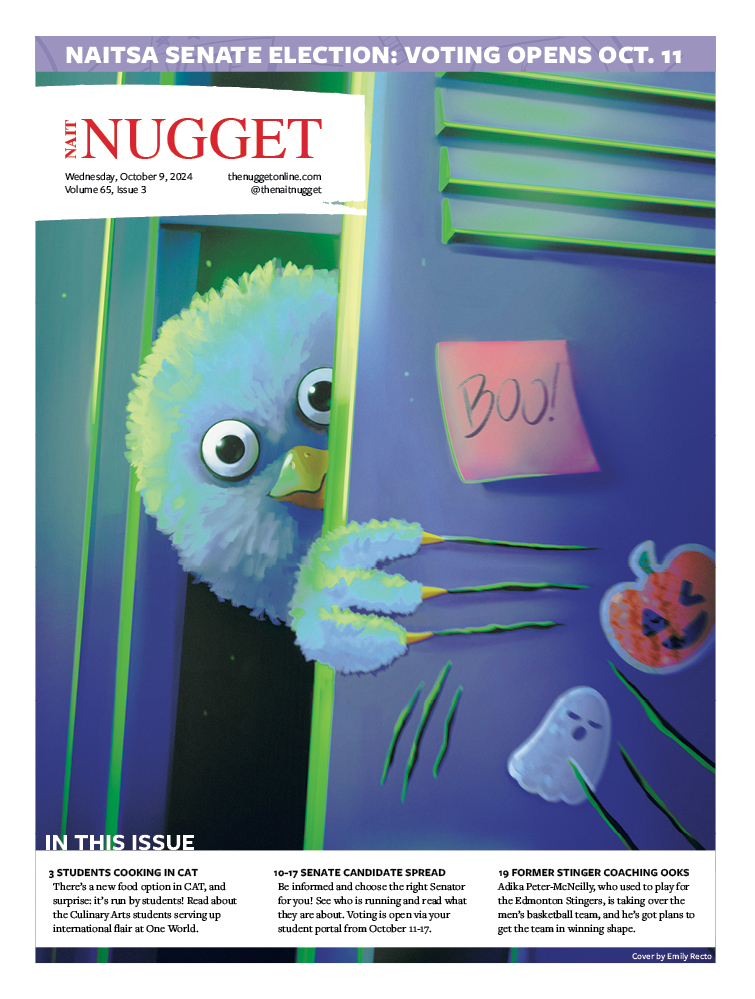When I first sat down to play Silent Hill for this review, it was blizzarding. Like many other gamers and horror fans in my generation, I thought “It looks like Silent Hill out there.” Has Silent Hill become so ingrained in our society that the mere presence of mist brings it to mind? I think so. And its influence on the horror genre, especially when it comes to video games, couldn’t be more obvious. Instead of taking inspiration from horror B-movies, Silent Hill took inspiration from the likes of Twin Peaks and Jacob’s Ladder, focusing on the cerebral aspects of horror.
Silent Hill came out 25 years ago this March. I personally found it around its 10th anniversary in 2009 when I was 13. I probably shouldn’t have been playing it, nor was I allowed to, but emulation existed and I had a laptop. Since then it’s become one of my favourite games, so I wanted to revisit it for its 25th anniversary.
Your journey starts with chasing the daughter of the main character, Harry, into an alley. This leads to the most memorable part of the game that sets the tone for the rest of the experience. And, in spite of the game being 25 years old at this point, I don’t want to spoil the opening any further.
Silent Hill made the best of its limitations. The iconic fog seen in countless horror movies and games is a by-product of them, as it hides a short draw distance. As is the game’s short length–my playthrough for this article came in at four hours and 10 minutes. Granted, I’ve played through the game many times and knew where to go to get the best ending. But it would take most adults five or six hours to finish a blind playthrough. But the short length is definitely beneficial. They tell a concise story that doesn’t drag on but also rewards exploration.
What it lacks in graphical quality (even for 1999) it makes up for with atmosphere.The town of Silent Hill is oppressive. It’s not just the blizzard either. Roads abruptly end, the town’s empty and the terrifying soundtrack follows your every step. While we take it for granted nowadays, most 3D games at the time didn’t have modeled buildings. Silent Hill, however, did. This makes the world feel lived in when compared to other 90s horror games. Because of the lack of people, the feeling of isolation is pushed to the forefront.
What aged the worst are the tank controls. For those who don’t know, the original PlayStation only had eight directional inputs. So going straight from a game like Fallout 4, which has smooth movement due to the analogue stick, to Silent Hill took some getting used to. This gets worse when you need to make more precise movements, like in the final boss fight. Another thing that hasn’t aged as well is the voice acting. It’s stilted, but it adds another layer of discomfort to the game. While it hasn’t aged well, it has a similar charm to Twin Peaks.

But one of the most iconic aspects of this game is its use of fixed camera angles. Silent Hill does them better than any other game, in my opinion. At many points throughout the game, you’re forced into a cinematic camera angle. For example, there was one room in the final level with a save point in it. The room is pitch black. The only light comes from the flashlight attached to your jacket. There’s an open area, but it’s too dark to see the other side if you’re not facing it. The camera angle insinuates something is, or will be, there, and I felt the need to check the darkness every time I saved. Nothing was ever there. That’s what I mean when I say Silent Hill’s horror is cerebral. I created a monster hidden in darkness, and all they had to do was tease its existence.
This room also brings us to the area housing it, Nowhere. Nowhere is the best part of the game. And that’s not a joke, the final level is actually called Nowhere. It’s the longest level if you don’t know what you’re doing. There’s no map, the layout is confusing and the puzzles seem obtuse until you start thinking creatively. It’s the perfect amalgamation of the game’s themes and storytelling thus far–all leading up to the most intense fight in the game.
Silent Hill wouldn’t be as good as it is without Akira Yamaoka’s sound design. This game has one of the most intense soundtracks I’ve ever heard. For instance, the final boss is made even more intense through its theme, My Heaven. Before you can even get your footing, you hear a pair pitched-up dentist’s drills boering their way into your ears. Then frantic drumming starts without a constant beat. The track speeds up and slows down seemingly at random, creating a sense of anxiety despite the action packed encounter.
Outside of that, almost everything makes you feel uncomfortable, even the silence. Scratch that–especially the silence. One of Yamaoka’s philosophies is “silence is a sound too.” This understanding of sound is what makes the game terrifying. If the room I mentioned earlier had music, even a droning ambient track, it wouldn’t have been nearly as scary. The lack of sound aside from Harry’s footsteps caused me to listen more. And the use of an old, broken down radio as a means to warn you when monsters are around is equally as effective, making already tense encounters even more overwhelming.
Silent Hill has done what I thought was impossible due to the era it came out. It’s aged well. The visuals leave a lot to be desired, but to its benefit. When imagination fills in the details, what you come up with is often more terrifying than what’s intended. Instead of traditional scares, Silent Hill leaves you to wallow in isolation, terrified of what’s just beyond the ever-present fog. Modern horror has successfully scared me but no other franchise has me pondering existence after a session of playing it. The legacy it left in the last 25 years of gaming is undeniable. Games like Until Dawn, Alan Wake and Fatal Frame took massive amounts of inspiration from the franchise it spawned. Silent Hill is a true example of video games as art.






